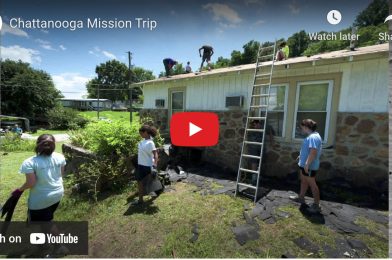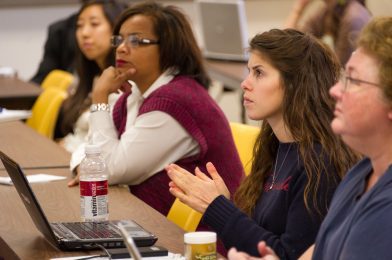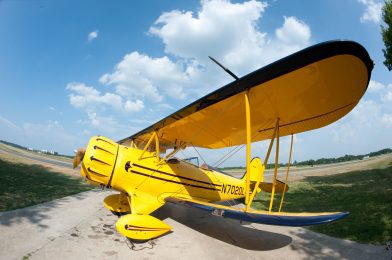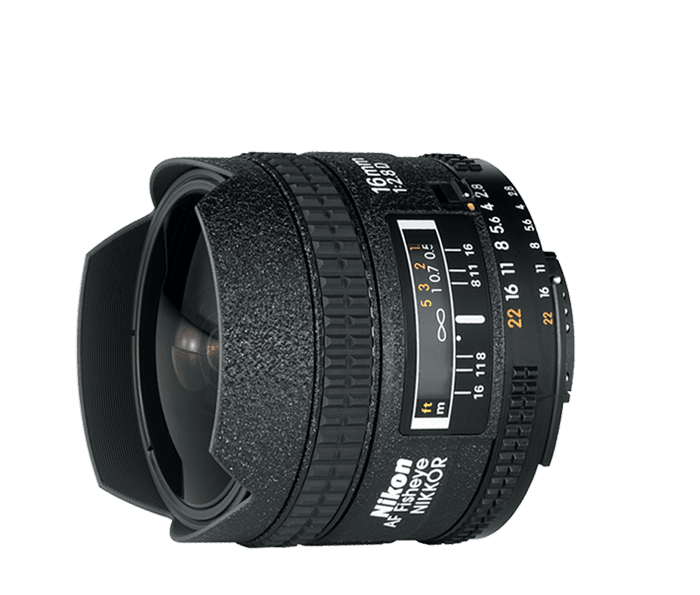Month: June 2011
Have you ever gotten a grade for your photography?
Gary Chapman, a fellow photographer, commented the other night that he enjoys having written something versus the act of writing. I couldn’t help but laugh.
Gary’s comment got me thinking, and since I like to do armchair sociology, I came up with thoughts about how we learn to read and write versus visual literacy.
While I have a master’s degree, I went through more than seventeen years of formal education, but I still struggle with writing.
Testing revealed that I have some form of autism, and I believe I most likely have Asperger’s syndrome. I consider this a blessing. My wiring is different; therefore, this has given me a unique view of the world. It also explains why writing is complex, and I excel at visuals.
There are different ways people see the world and learn. I am a visual thinker and learner. What I struggle with regularly is writing, which is linear thinking.
How do you know if you are good at something? With reading and writing, you get affirmation through grading. All through school, you learn how to read and get tested on your retention. Just because you can read it doesn’t mean you can write.
In contrast, we go through extensive training to learn how to read and write to visual literacy. The education system teaches us reading and writing but not how to understand visual communication unless we take an art appreciation class. Learning to appreciate good visual communication isn’t the same as knowing how to create visual communication.
When kids return to school at the end of this summer, many will have a traditional assignment to write about their summer experiences. The project concerns how many teachers evaluate their writing skills and what they may have to teach to get the students up to grade-level writing.
If we had been required to hand in our photos from those summers, many of us would have discovered that our pictures would have earned failing grades. Instead, we failed grades because we lacked visual skills. You cannot create visuals that convey a message if you don’t know how visuals communicate.
 There are many resources to help you learn about visual literacy, but not as many as we have for understanding reading and writing. You can get one book, The Power of the Gaze (New Literacies and Digital Epistemologies), on Amazon. Here is a description of the book: The Power of the Gaze, a textbook on visual literacy, entices the reader to seek significant structures in everyday visual reality called visual orders. These graphic orders are in representations, visible surroundings, or nonverbal interaction that relies on gaze. To understand what one looks at, one must first understand what it means to gaze and what it means to look. Visual literacy is the critical understanding of the meanings of graphic orders. The book is for all readers interested in visual culture and its phenomena. I recommend taking time to learn to read visually and then learn how to create visuals. This skill is essential if you work in the communications field.
There are many resources to help you learn about visual literacy, but not as many as we have for understanding reading and writing. You can get one book, The Power of the Gaze (New Literacies and Digital Epistemologies), on Amazon. Here is a description of the book: The Power of the Gaze, a textbook on visual literacy, entices the reader to seek significant structures in everyday visual reality called visual orders. These graphic orders are in representations, visible surroundings, or nonverbal interaction that relies on gaze. To understand what one looks at, one must first understand what it means to gaze and what it means to look. Visual literacy is the critical understanding of the meanings of graphic orders. The book is for all readers interested in visual culture and its phenomena. I recommend taking time to learn to read visually and then learn how to create visuals. This skill is essential if you work in the communications field.
Photographing birds at a feeder in the rain
We just love watching the birds at a feeder on our deck each day. Of course we have to chase away some of the squirrels.
I was wanting to shoot some photos and it was raining–then I thought let me show you how to do this in the rain.
| We enjoy our bird feeder and the birds that visit us. |
 |
| By using a flash I can somewhat capture the bird in flight. Actually I startled the bird with the flashes. |
 |
| Here is the simple setup. I did this while it was raining and so I covered the flashes with zip lock bags to keep them dry. |
 |
| Since it was raining it was darker than normal and the flashes helped light up the birds but the background disappears. |
 |
| I decided to put one flash pointing to the background (see setup below) to help keep the background from disappearing. However the birds had stopped for a while visiting when I was doing this. |
 |
| The Nikon SB900 flash to the far right is set on 200mm zoom. This helps put the light on the distant trees. The light to the right is lighting the bird feeder and any birds. |
Part 2: The exotic location might be your backyard
 |
| I am always looking for interesting visual elements. While this won’t win a Pulitzer it is different and I think makes you take a second look. |
On our local TV station Channel 11, an NBC affiliate, they are promoting doing random acts of kindness. I get goose bumps when I think of all the mission projects our church is involved in. A good number of the mission partners we work with were actually started by members of our church.
One that I go to often is the North Fulton Community Charities. We donate clothing and things we are no longer using to the Thrift Shop. North Fulton Community Charities (NFCC) is a non-profit human service agency dedicated to preventing homelessness of individuals residing north of the Chattahoochee River in Fulton County (Alpharetta, Johns Creek, Milton, Mountain Park and Roswell). NFCC assists families with basic needs such as food, rent and utilities, and clothing during short term emergencies.
 |
| The Roswell Presbyterian Youth group works on an older ladies home. They scrapped the old paint off. They have sanded the boards and also filled holes. |
If you are a professional communicator you can create your own blog and tell the stories of those in your community. You can help educate those around you about the needs and opportunities for others to serve in their community.
 |
| You can see the places they sanded and see how the new fresh coat of paint will help the home last longer against the elements. |
The age of service starts young in our church. The vacation bible school had a competition last week. The kids all brought in pennies and see which class raised the most money to help with a charity. They raised over $1,000. This was children as small as the toddlers.
 |
| I am using a flash off camera to be sure you can see the youth as they work. If i didn’t the faces would be primarily back-lit and the flash helps you see their faces. |
The other cool thing about this project to me is you don’t have to have money to get involved. You can give of your time. Volunteer your elbow grease and make a difference.
 |
| Bill Silzle, chemical engineer and member of Roswell Presbyterian, donated his time to replace a garbage disposal on the same house they are painting. I think he maybe over qualified. |
I believe my gift in these project is creating compelling images that helps tell the story and inspires others to get involved. This fall our church is going to have a display of photography up in what we call “Main Street.” it is the major hall of our church that folks walk through where we will hang large prints (20″x30″) to help tell the story of our mission projects around the city, nation and world.
We will have captions to tell you where the photo was taken and what the church helped with the charity. After the exhibit runs for a couple months we will then take the prints down and put them in other locations through the church.
What are other ways you can use photography to help charities? Leave your comments below.
The exotic photo location maybe in your backyard
 |
| The Roswell Presbyterian Church Youth take the Child Development Association kids for a day of fun at the Chattahooche Nature Center located in Roswell, GA. |
This year Roswell Presbyterian Church in Roswell, GA is doing a mission project locally with their youth. They are calling it The Well. The high school youth are staying in town and working with the local mission partners.
There seems to be a theme I am picking up with my friends also this year about doing things in our own backyards. Here is my friend Gary Chapman’s blog post about his coverage of a mission group here in Atlanta.
 |
| What I was really enjoying about this missions project is it is all about being someone’s friend. I think the one thing many folks forget about in missions is it isn’t about our building buildings and digging wells–it is that we are doing these things to have a relationship with people. |
The best part about shooting something like this mission trip that I did with my church locally is the investment you put into this project doesn’t have to be a one time event. You live near these people and can go back and maybe even develop a larger package.
The best part for those doing something local is you get to build on a relationship. Each person you get to know can be someone you might just develop a lifetime friendship with and you don’t have to wait till you travel again overseas to see them again.
 |
| I just love this moment with the small girl and the older teenager. What do you see when you look at this photo? Write me a comment below and let me know. |
 |
| She is letting the little boy know where she lives and he is telling her where he lives on the map of the Roswell area. |
 |
| I love taking walks in the woods. Here I think the canopy of the trees is like a cocoon. The teenagers are bonding with the toddlers and together they are having fun. |
I want to encourage you to find something near you that you can go and photograph this summer. Some of the best opportunities are in your backyard. Can you tell me some of your projects that you are doing in your community? Post your ideas below, you may just inspire all of us to do something we haven’t thought of before.
Grand Opening for New Chick-fil-A in Chicago
So, we took them there virtually with a 360 panoramic shot.
What do you think of these two street views?
High Key Portraits – How to guide
 |
| This is called a “High Key Portrait” because of the white background. |
The toughest part of doing “High Key Portraits” is getting the lighting just right. Before I address that let me tell you why I like using them at times. In this case the model wanted some head shots for acting career. It is easier to light her very evenly and let her move around and then capture “moments.”
Setting up for this type of lighting requires a few “know hows.” First setup the background so it isn’t perpendicular to the camera. A slight angle is needed. If you don’t do this you will have more photos with a flare.
Place two strobes on either side slightly behind where the subject will be and angle them at 45 degrees to the background.
 |
| Notice background and placement of the lights. |
Place two strobes with shoot through umbrellas 45 degrees to the subject. The closer they are to the subject, but not in the frame will create the softest lighting.
Meter the main strobes (umbrellas) and get them even in output of light. Choose an f/stop that give you the desired depth-of-field that you like. Then set the background lights evenly and 1.5 to 2 stops greater. Be sure they evenly light the background.
Take a few test shots. If you look on your histogram and you have the blinking highlights function on, then the background should all blink and the subject should be fine.
I would suggest using a lens shade for this to cut down on the flare that is possible from all the lights.
Spacing is important for group photos
 |
| When you have groups space the people so that if you have a second row they are staggered in between the front row. |
When taking group photos, arrive early. You need to scout the location, maybe setup risers, set your lights and then wait. When the group arrives you can ask everyone to lineup by height and start in the middle back with the tallest person. As you add people alternate them on either side of the middle.
While you might not have a set of risers there are many places you can get a similar effect. Look for stairs a sloped area outside or if you don’t find one get up higher and shoot down on the group.
The key is to have the photo already sketched out in your mind or even on paper. You also have to take charge right away. I have even jokingly taken a few shots before they get into place fully. Since the flashes go off the folks think I have already really started. Well I have–I have taken charge and gotten their attention.
I do make a little joke and then they all laugh. I might even snap another one for fun. The problem with large groups is people have conversations with each other. You need their attention and also need those talking to stop. They make it difficult for others to hear your instructions.
 |
| Use steps or risers for larger groups so that the people on the back rows are not blocked by the height of those in front of them. |
One thing these photos show is how more uniform everyone is in their dress the more of a “group” they become. Even the introduction of color with the hoods creates a little more of individuality in the photo.
 |
| For the group photos I used this setup. The lights were about 30 feet from the group. The further the light is from the group the light value from the front row to the back is more even. The closer the light is to the group the greater the risk is of the front row being much brighter than the back row. |
 |
| Before and after group photos I like to shoot candid photos. Most clients love to have this moments for their files. |
Still Life – I like it to look natural
 |
| I prefer food looking like it is in the home or location and not in a studio |
I was on a shoot at a home and noticed this on their dining room table. It just looked so inviting that I had to make the photo.
 |
| The photo I was shooting when I saw the pie on the table just a few moments later. |
Together the photos really communicate life on the farm and in the country. The photos were later used for Country Living.
When you are photographing people look for those detail shots. When you use them together you get what we call the x-factor. This is when the message of the combined photos communicates something totally different than the photos just by themselves. They strengthen each other.
Sometimes you need a unique lens like the Fish-Eye.
Waco YMF Biplane
Years ago, I found myself in some pretty small areas. While photographing research labs, I was photographing what felt like the inside of a closet. So finally, I bought a fish eye 16mm Nikon f/2.8 lens. It gives me a 180-degree view.

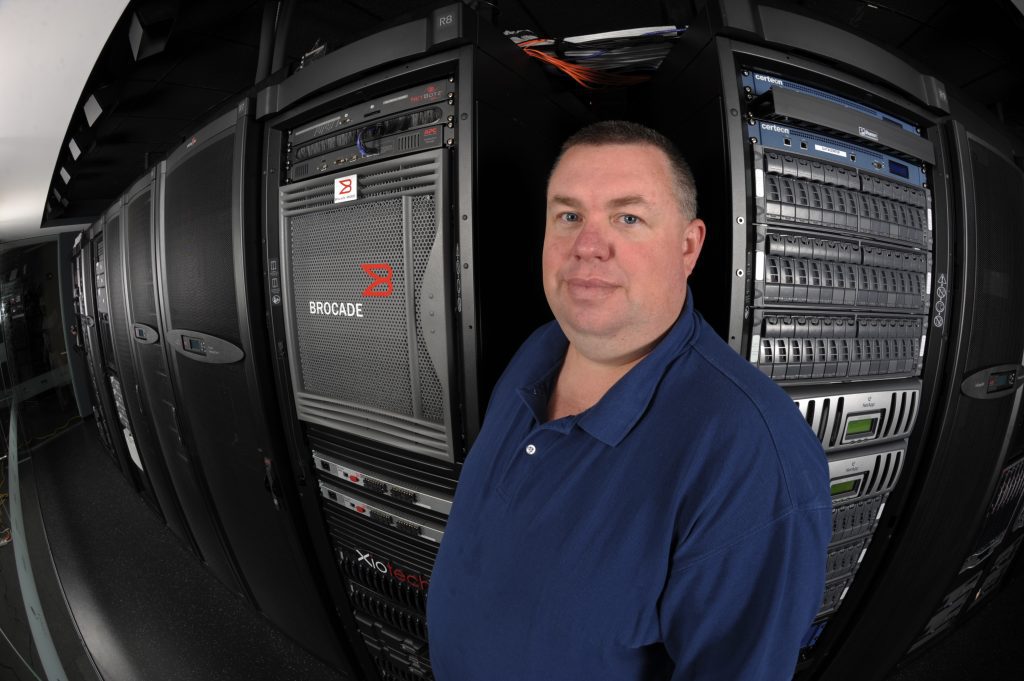
This past weekend, it came in handy to help capture what it was like to ride in a biplane for my wife and me.
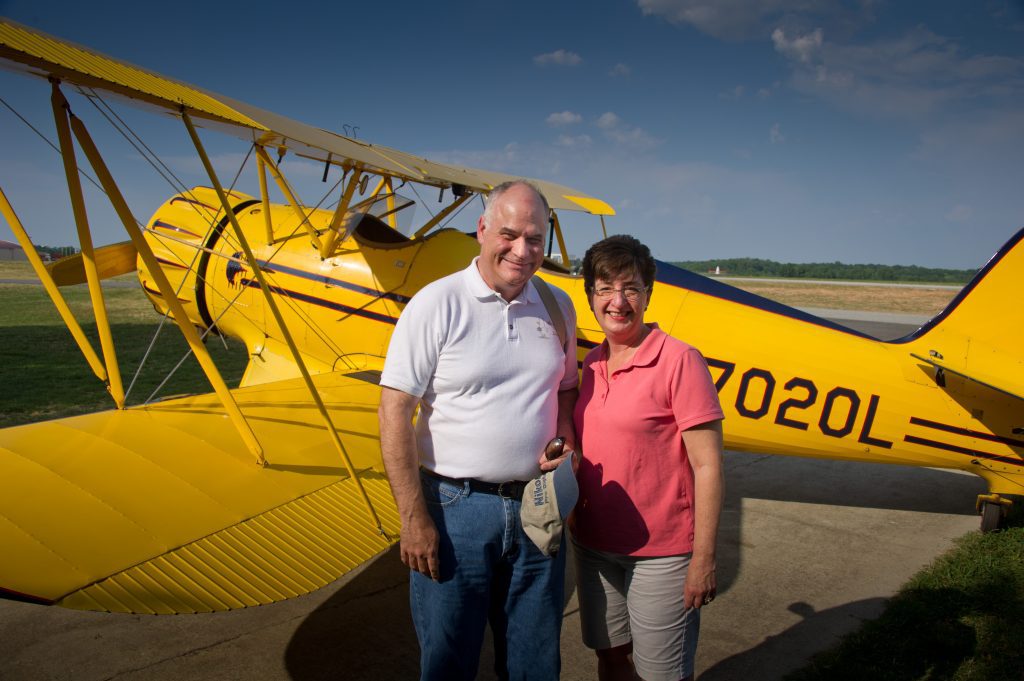
Any standard wide-angle lens would give me a portrait at best and not capture the environment. So if you have very little space, this lens will help you capture the small room.
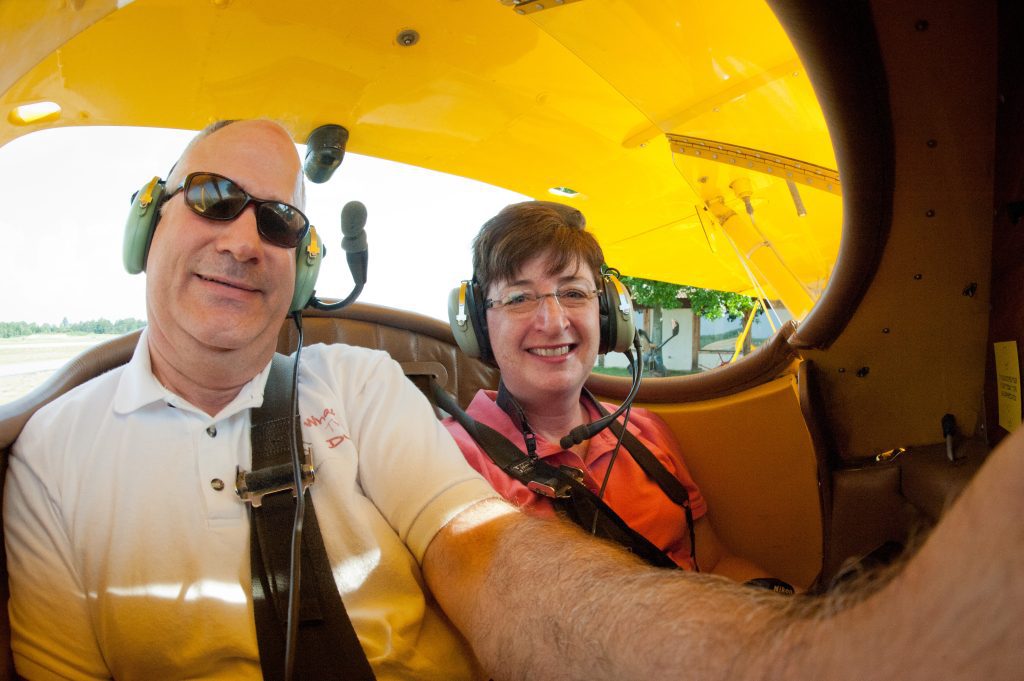
Sometimes you have a big sky and want to capture the things close to the camera and the expanse around it. Here shooting out of the cockpit, I caught the feeling I had being in the cockpit and looking out. What did I want the photo to do for you–I wanted you to get an excellent feel for flying. How did I do?
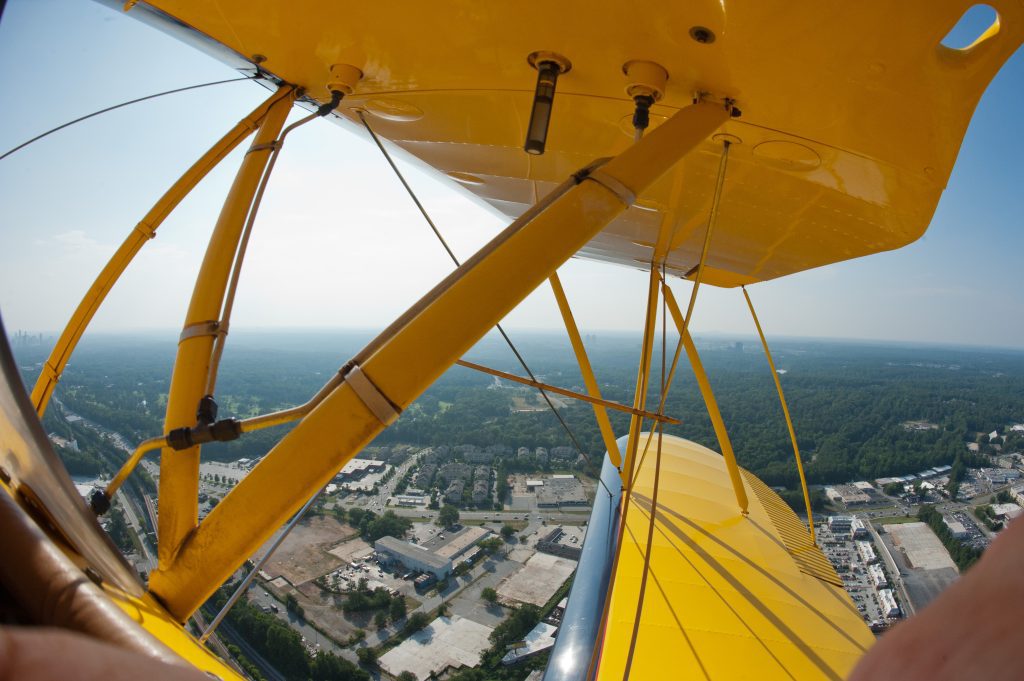

When you are in tight spaces like a room the size of a closet, the 16mm helps you get wide enough. What surprised me is how often, in the big open spaces, the 16mm can work and give you a unique and intimate view.
What are some ways you have used a fish eye lens? Let me hear from you in the comments below.
Clothing for photographers
There are a couple things a photographer must think about when it comes to their clothing: 1) comfort and 2) pockets.
 |
| Tropical Vest/Jacket goes for $120 |
The travel vest is one clothing item that has been very popular with photographers. Today there are more options. I have a friend Garret Rutherford that really has me thinking a lot about style. When I was really young I didn’t care at all about it, I just wanted to stay warm or cool. I think you do need to be aware as a photographer what you look like because it will affect your pictures.
Just like camouflage helps a photographer blend into the forest so as not to scare aware animals they are trying to photographer there are appropriate types of clothing that help you be understated in different environments.
[youtube https://www.youtube.com/watch?v=D3yVZS16QFE]
Here is a new jacket to the market that can help you carry some items, is breathable material and is fashionable for the photographer. Here is a link to buy it and a video to show you it in use.
[youtube https://www.youtube.com/watch?v=gS9hUnp-c7c]
 |
| ExOfficio Bugsaway Halo Check Shirt |
My favorite store for travel clothing is REI. They carry the ExOfficio Bugsaway clothing. It has an odorless Insect Shield® Repellent Apparel helps keep biting and potentially disease-carrying insects at bay and shirt also provides UPF 30+ protection from the sun. After about 70 washes you have to retreat the clothing. A trick a friend taught me that with most other clothing without the bug repellant you can just spray your collar and edge of the sleeves–it will keep the bugs out.
For me I like that the fabric dries fast so you can wash the shirt in a sink and wear it again only a few hours later. This is important going to some places in the world where you don’t have washer and dryers available.
They make pants as well and you can get pants that look very similar to dress pants or cargo pants if you need more pockets for all that camera gear.
Here is a little video showing the shirt.
 |
| REI Vented Explorer Hat |
When you are traveling and out side a lot you need to protect your head–especially if you are follically challenged as I am.
I look for material that wicks away moisture and helps keep me cool. This REI Vented Explorer Hat has a polyester inner headband that wicks moisture away from your brow and speeds the evaporation process and therefore works like an air conditioner for your head.
While baseball style caps can keep the sun off the head I like to put my ears and most of my neck in the shade as much as I can. When I moved to Fort Worth to live from Long Island, NY my friends told me the difference between the sun and shade felt like a 20° difference. My thought is use my hat to create that cool shade for my head.
One of my friends who shoots around the world was asked at a camera club meeting what was the most important piece of equipment for his work–his shoes he said. If I have the right kind of footwear I can then get to the place to make the photo.
 |
| Vibram FiveFingers KSO Multisport Shoes |
While I haven’t bought the Vibram FiveFingers KSO Multisport Shoes I do think they are a great visual to make my point. A shoe that is comfortable and fits well will let you do just about anything. While these might be comfortable and great for the athlete, I would recommend another shoe for most photographers–we tend to be still and not needing to run while taking photos.
The Keen Bidwell Slip-On Shoes are great for travel through airport security, they look a little more low key than the Vibram FiveFingers. The shoes also have KEEN.CUSH™ footbeds contain polyurethane and memory foam to provide ample cushioning and support.
 |
| Keen Bidwell Slip-On Shoes |
Look at your shoes first for comfort and then for fashion so you can blend in with the crowd.
What tips do you have for folks about clothing for the photographer? You can share them below in the comments.
Photographers need to choose their vehicle wisely
 |
| Toyota 2007 Sienna that I own. |
Getting to and from assignments is very important. You need a reliable vehicle in this industry and you need space to put cases of camera gear.
My favorite vehicle that I have ever owned is the Toyota Sienna.
 |
| With the back seat folded down and into the floor makes a lot of room for gear. |
I have owned other minivans, which are great because you can park them in a garage. Other minivans I had to take the back seats out to then use the space for my camera gear.
What I like about the minivan I have is the back seats fold down into the floor and then I can pack most all the gear I would ever need in the back and still have seating for four people. You can fold down the middle seats as well and gain more space without removing them and if you need a lot of space they come out.
However, the reason I like the seats that disappear in the back is I don’t break my back taking them out. Another good thing is once I arrive somewhere I can unload and then use the van to take the clients around if needed. Great for those out of town shoots where you might want to go to a restaurant with the crew at the end of the long day of shooting.
 |
| What I like about the seats that fold into the floor, is once you have unloaded you can just pull up the seats for your clients to go to lunch or dinner. |
When you plan to do photography as a career your vehicle choice can make a huge difference. It is like having kids, the sports car just will not cut it for the family guy and neither does the small sports car for the photographer work.
Most commercial photographers have lighting gear, backgrounds, extension cords and more to carry on a shoot.
Take a look here at some of the lighting gear I carry in this video. It is quite common to have four or five cases this size on photo shoots.
What vehicle do you use and why? Comment below.

